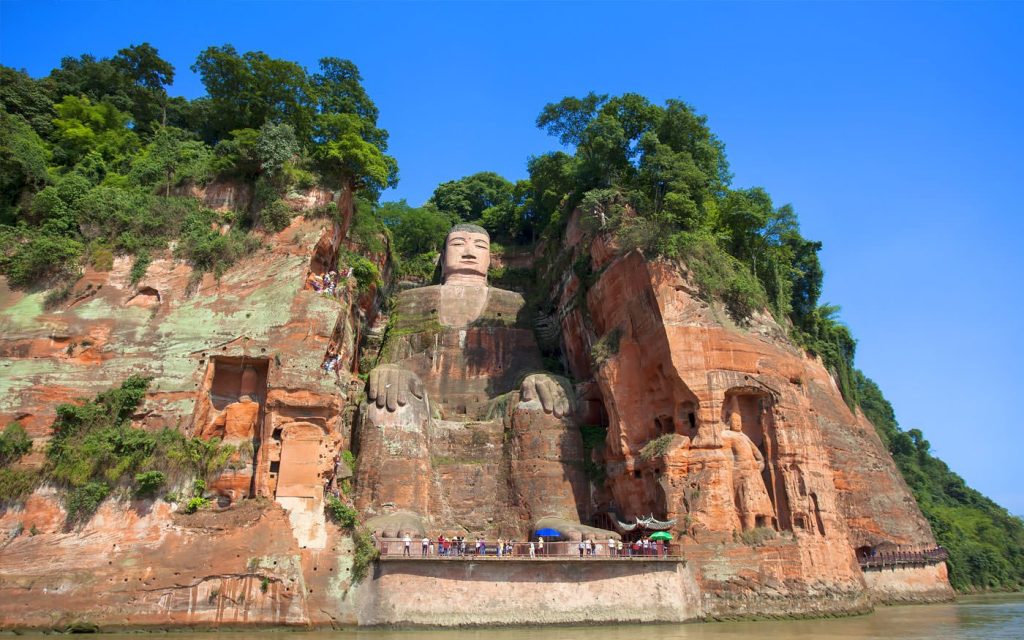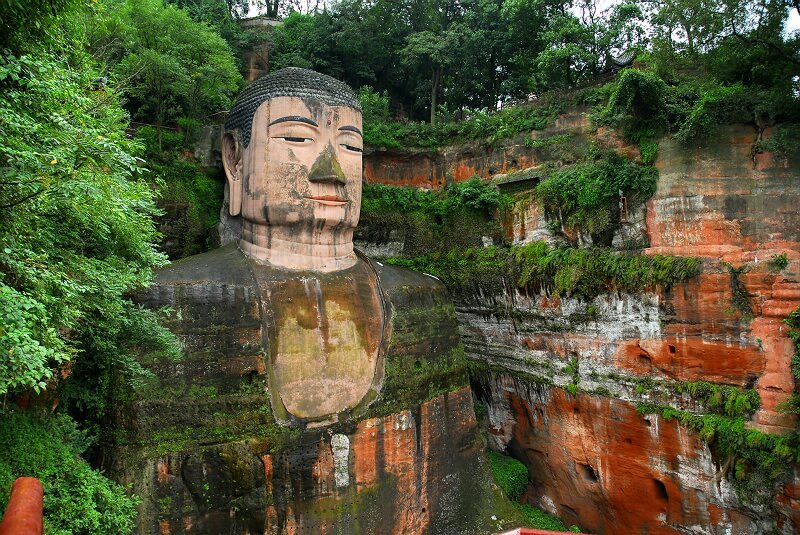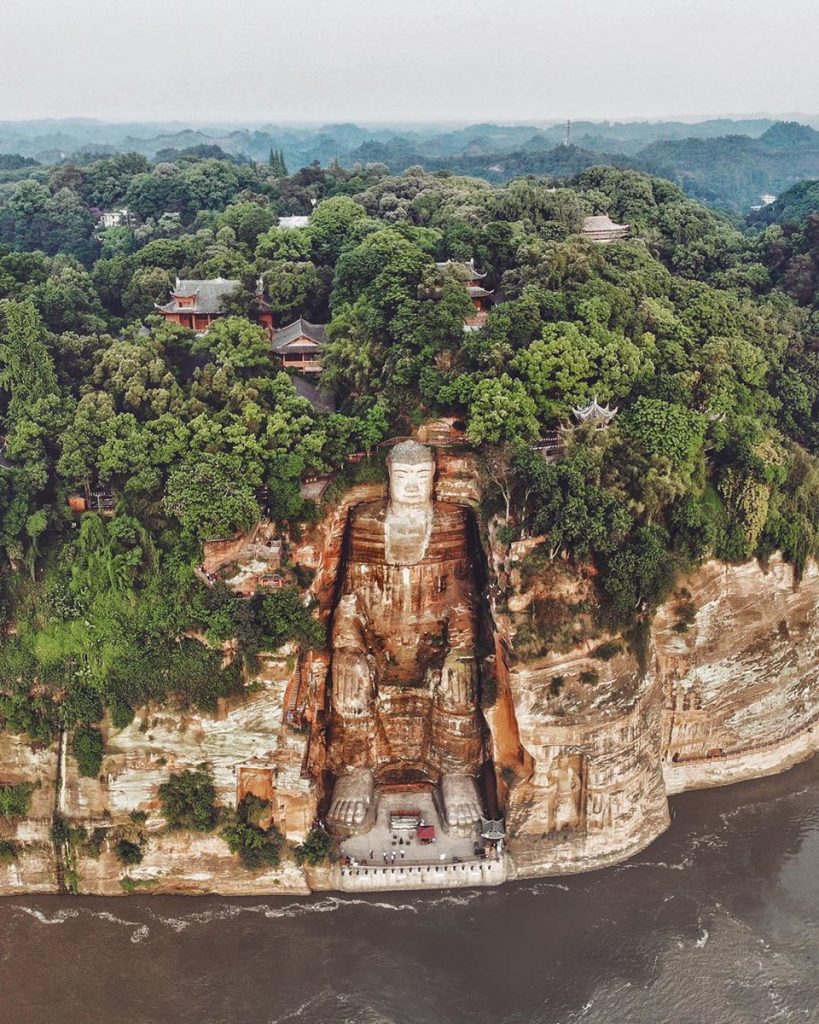The Giant Buddha Of Leshan

The Leshan Giant Buddha is the largest stone Buddha statue in the world.
It is carved into the rock where the Minjiang, Dadu and Qingyi rivers meet, near the city of Leshan, in the southern part of Sichuan province, China.
The sculpture is placed in front of Mount Emei, with the rivers flowing at its feet.
Construction of the work began in 713, led by a Chinese monk named Haitong.
He hoped that the Buddha could calm the turbulent waters that plagued the merchant ships going down the current of the rivers.
The statue was completed by his disciples 90 years later.
It seems that the enormous mass of rock removed for the construction of the work and deposited in the rivers at the foot of the statue has actually altered the course of the water, with the result that navigation became safer.
In 1996 the area of the Emei Mountains, including the area where the statue of the Giant Buddha of Leshan is located, was included in the UNESCO World Heritage List.
The statue, 71 meters high, represents a Maitreya Buddha in a seated position, with his hands resting on his knees.
The shoulders are 28 meters wide and one person could sit comfortably on the smallest nail.
A local motto says that “the mountain is a Buddha and the Buddha is a mountain”: this is also due to the fact that the mountain range in which the statue is located has a vague resemblance (when viewed from the river) with the shapes of a Sleeping Buddha, with the giant statue in the center.
From a distance, his hair is integrated with his head, as if inlaid with stone, and the exposed areas of the hair have a noticeable orthographic inlay and no connection with the mortar.
The inner layer of the Leshan Giant Buddha system is lime, and the surface is plastered in two layers, with a total of 18 layers.
Behind the Buddha’s head and between his two ears, the Leshan Giant Buddha has a unique and advanced drainage system to preserve the statue from erosion.
There are several hidden gutters and channels scattered in Buddha’s hair, collar, chest, and holes in the back of his ears and chest that have been carrying out the rainwater to keep the inner areas dry.
This complex architectural system has been preventing the statue from eroding for the past 1,200 years.


